The Story of the Malakand Field Force by Winston S. Churchill (guided reading books txt) 📕
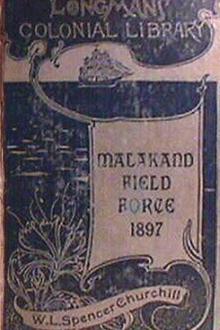
- Author: Winston S. Churchill
- Performer: -
Book online «The Story of the Malakand Field Force by Winston S. Churchill (guided reading books txt) 📕». Author Winston S. Churchill
The force was now large enough for two brigades to be formed, and on the arrival of Brigadier-General Meiklejohn it was reconstituted as follows:—
1st Brigade.
Commanding—Brigadier-General Meiklejohn, C.B., C.M.G.
Highland Light Infantry.
31st Punjaub Infantry.
4 Cos. 24th Punjaub Infantry.
10th Field Battery.
No.7 British Mountain Battery.
2nd Brigade.
Commanding—Brigadier-General Jeffries, C.B.
The Royal West Kent.
38th Dogras.
Guides Infantry.
No.8 Mountain Battery.
The Guides Cavalry.
The camp was greatly extended and covered a large area of ground. In the evenings, the main street presented an animated appearance. Before the sun went down, the officers of the different regiments, distinguished by their brightly-coloured field caps, would assemble to listen to the pipes of the Scottish Infantry, or stroll up and down discussing the events of the day and speculating on the chances of the morrow. As the clear atmosphere of the valley became darkened by the shadows of the night, and the colours of the hills faded into an uniform black, the groups would gather round the various mess tents, and with vermuth, cigarettes and conversation pass away the pleasant half-hour before dinner and “sniping” began.
I would that it were in my power to convey to the reader, who has not had the fortune to live with troops on service, some just appreciation of the compensations of war. The healthy, open-air life, the vivid incidents, the excitement, not only of realisation, but of anticipation, the generous and cheery friendships, the chances of distinction which are open to all, invest life with keener interests and rarer pleasures.
The uncertainty and importance of the present, reduce the past and future to comparative insignificance, and clear the mind of minor worries. And when all is over, memories remain, which few men do not hold precious. As to the hardships, these though severe may be endured.
Ascetics and recluses have in their endeavours to look beyond the grave suffered worse things. Nor will the soldier in the pursuit of fame and the enjoyment of the pleasures of war, be exposed to greater discomforts than Diogenes in his tub, or the Trappists in their monastery. Besides all this, his chances of learning about the next world are infinitely greater. And yet, when all has been said, we are confronted with a mournful but stubborn fact. In this contrary life, so prosaic is the mind of man, so material his soul, so poor his spirit, that there is no one who has been six months on active duty who is not delighted to get safe home again, to the comfortable monotonies of peace.
CHAPTER XV: THE WORK OF THE CAVALRY
The negotiations of the Mamunds had this time opened under more propitious circumstances. The tribesmen were convinced by the arrival of the large reinforcements that the Government were in earnest. The return of “the big general,” as they called Sir Bindon Blood, to distinguish him from the brigadiers, impressed them with the fact that the operations would be at once renewed, if they continued recalcitrant.
They had still a few villages unburned, and these they were anxious to save. Besides, they disliked the look of the long topes, or field guns, of whose powers they were uncertain. They therefore displayed a much more humble spirit.
On the other hand, every one in the force had realised that there were “more kicks than ha’pence” to be got out of the Mamund Valley. All the villages in the plain had been destroyed. Only a few of those in the hollows of the hills remained. To these the enemy had retired. In Arrian’s History of Alexander’s Conquests we read the following passage: “The men in Bazira [Bazira is the same as Bajaur], despairing of their own affairs, abandoned the city … and fled to the rock, as the other barbarians were doing. For all the inhabitants deserted the cities, and began to fly to the rock which is in their land.” Then it was that Alexander’s difficulties began. Nor need we wonder, when the historian gravely asserts that “so stupendous is the rock in this land … that it was found impregnable even by Heracles, the son of Zeus.” Thus history repeats itself, and the people of Bajaur their tactics. There was, however, no doubt as to the ability of the brigades to take and burn any village they might select. At the same time it was certain that they would encounter relays of Afghan tribesmen, and regular soldiers from the Amir’s army, and that they would lose officers and men in the operation. The matter had to be carried to a conclusion at whatever cost, but the sooner the end was reached, the better.
But in spite of the auguries of peace, the foraging parties were usually fired upon, and this furnished several opportunities for the display of the value of the cavalry. I shall avail myself of the occasion to review the performances of the mounted arm during the operations. As soon as the brigades entered Bajaur, the 11th Bengal Lancers were employed more and more in that legitimate duty of cavalry—reconnaissance. Major Beatson made daily expeditions towards the various valleys and passes about which information was needed. This use of cavalry is an entirely new one on the frontier—it having been thought that it was dangerous to employ them in this way. Though horsemen need good ground to fight on to advantage, they can easily move over any country, however broken, and where they are boldly used, can collect as much information as is necessary.
Reconnaissance is by no means the only opportunity for cavalry employment on the frontier. They are as formidable in offensive tactics as they are useful in collecting intelligence.
The task which is usually confided to them in these mountain actions is to protect one of the flanks. The ground hardly ever admits of charging in any formation, and it is necessary for the men to use their carbines.
On 30th September the cavalry were so employed. On the left of the hostile position was a wide valley full of scrubby trees, and stone walls, and occupied by large numbers of the enemy. Had these tribesmen been able to debouch from this valley, they would have fallen on the flank of the brigade, and the situation would have become one of danger.
For five hours two weak squadrons of the Guides Cavalry were sufficient to hold them in check.
The methods they employed are worth noticing. Little groups of six or seven men were dismounted, and these with their carbines replied to the enemy’s fire. Other little groups of mounted men remained concealed in nullahs or hollows, or behind obstacles. Whenever the enemy tried to rush one of the dismounted parties, and to do so advanced from the bad ground, the mounted patrols galloped forward and chased them back to cover. The terror that these tribesmen have of cavalry contrasts with their general character. It was a beautiful display of cavalry tactics in this kind of warfare, and, considering the enormous numbers of the enemy, who were thus kept from participating in the main action, it demonstrated the power and value of the mounted arm with convincing force.
On the 6th of October, I witnessed some very similar work, though on a smaller scale. A squadron was engaged in covering the operations of a foraging party. A line of patrols, moving rapidly about, presented difficult targets to the enemy’s sharpshooters. I found the remainder of the squadron dismounted in rear of a large bank of stones. Twenty sowars with their carbines were engaged in firing at the enemy, who had occupied a morcha—a small stone fort—some 300 yards away. Desultory skirmishing continued for some time, shots being fired from the hills, half a mile away, as well as from the morcha. Bullets kept falling near the bank, but the cover it afforded was good and no one was hurt. At length word was brought that the foraging was finished and that the squadron was to retire under cover of the infantry. Now came a moment of some excitement. The officer in command knew well that the instant his men were mounted they would be fired at from every point which the enemy held. He ordered the first troop to mount, and the second to cover the retirement. The men scrambled into their saddles, and spreading out into an extended line cantered away towards a hollow about 300 yards distant.
Immediately there was an outburst of firing. The dust rose in spurts near the horsemen, and the bullets whistled about their ears. No one was however hit. Meanwhile, the remaining troop had been keeping up a rapid fire on the enemy to cover their retirement. It now became their turn to go. Firing a parting volley the men ran to their horses, mounted, and followed the first troop at a hand-gallop, extending into a long line as they did so. Again the enemy opened fire, and again the dusty ground showed that the bullets were well directed. Again, however, nobody was hurt, and the sowars reached the hollow, laughing and talking in high glee. The morning’s skirmish had, nevertheless, cost the squadron a man and a horse, both severely wounded.
Such affairs as these were of almost daily occurrence during the time that the 2nd Brigade occupied the camp at Inayat Kila. They were of the greatest value in training the soldiers. The Guides Cavalry know all there is to know of frontier war, but there are many other regiments who would be made infinitely more powerful fighting organisations if they were afforded the opportunity for such experience.
The great feature which the war of 1897 on the Indian Frontier has displayed is the extraordinary value of cavalry. At Shabkadr a charge of the 13th Bengal Lancers was more than successful. In the Swat Valley, during the relief of Chakdara, the Guides Cavalry and 11th Bengal Lancers inflicted the most terrible loss on the enemy. To quote the words of Sir Bindon Blood’s official report to the Adjutant-General, these regiments, “eager for vengeance, pursued, cut up and speared them in every direction, leaving their bodies thickly strewn over the fields.” Again, after the action of Landakai, the cavalry made a most vigorous pursuit and killed large numbers of the enemy. While I was with the Malakand Field Force, I was a witness of the constant employment of the cavalry, and was several times informed by general officers that they would gladly have a larger number at their disposal. The reader may recall some of the numerous instances which these pages have recorded of cavalry work. On the morning of the 15th September, it was the cavalry who were able to catch up the enemy before they could reach the hills, and take some revenge for the losses of the night. In the action of the 16th, the charge of Captain Cole’s squadron brought the whole attack of the enemy to a standstill, and enabled the infantry by their fire to convert the hesitation of the tribesmen into a retreat. Indeed, in every fight in the Mamund Valley, the cavalry were the first in, and the last out. In the official despatches Sir Bindon Blood thus alludes to the work of the cavalry:—“I would now wish to invite attention to the invaluable nature of the services rendered by the cavalry. At Nawagai, three squadrons of the 11th Bengal Lancers swept the country everywhere that cavalry

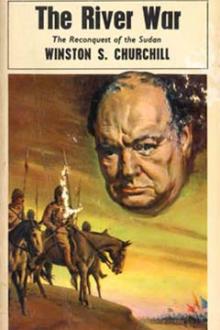
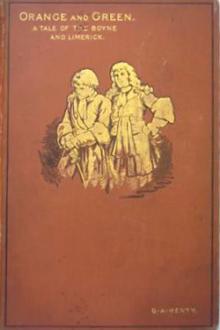
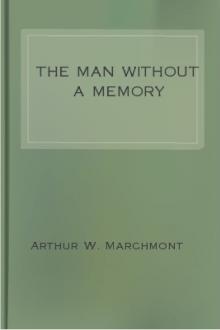
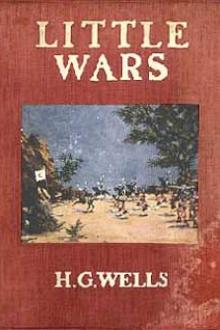
Comments (0)